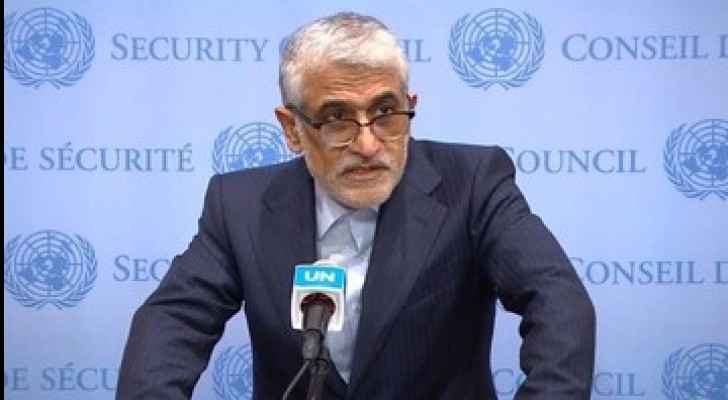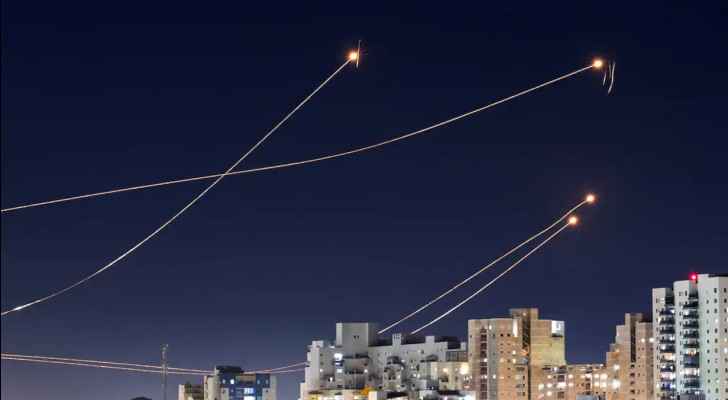A suggestion for Tehran and Riyadh - By Rami G. Khouri, The Jordan Times
My affection and respect for my good friend and colleague from the United Arab Emirates (UAE) with whom I discussed current events in the Middle East over a leisurely Lebanese lunch last week.
We had very different analyses of how tensions between Iran and Saudi Arabia shaped the situation across the Middle East.
He explained why the military action by Saudi Arabia, the UAE and others in Yemen was a decisive step that reflected the Gulf Arab states’ determination to stop Iran’s expanding influence in and even control of some Arab countries.
I suggested that such Arab fears of Iranian dominance were exaggerated and unrealistic. I argued that for decades, both Saudi Arabia and Iran had used their available soft and hard power instruments (money, religiosity, arms) to develop allies and improve their strategic relations across the region.
In fact, they were both acting in total accord with what regional powers routinely do in their regions, which is to develop close relations with like-minded allies in other countries in order to promote and protect their national interests.
Saudi Arabia in fact should have a strategic advantage in this, because it is an Arab society while Iranian-Persian culture is not.
The ability of Iran to develop close strategic ties with some Arab parties in Lebanon, Syria, Iraq, Bahrain, Palestine or Yemen, most notably, was due mainly to Tehran’s ability to exploit divisions and tensions within those Arab societies.
The Saudi-led Arab Gulf states did the same thing.
The minute that those troubled Arab lands fixed themselves — which has not happened yet — the window for regional or foreign powers to jump in and develop a foothold through strategic links with some of the warring Arab parties would close.
In fact, I argued — bolstered by the cosmic combination of Lebanese dessert and white coffee — neither Iran nor Saudi Arabia has done very well in developing strategic relations of long-term value.
In Lebanon and Syria, for example, Iran has strong links with Hizbollah and the shrinking regime of Syrian President Bashar Assad, but both these actors face serious political challenges in their own societies.
Saudi Arabia’s allies similarly enjoy very mixed conditions, especially the Sunni-dominated Future Movement in Lebanon and the anti-Assad rebels that Saudi Arabia and others support, who do not show any signs of either winning great popular support or being able to agree on an orderly transition to the post-Assad era.
The Ansarullah (Houthis) movement in Yemen is probably more of a burden than a benefit to Iran, and the Saudi-led war in Yemen is likely to create as many long-term problems as it resolves immediate threats of perceived Iranian hegemonic penetration.
Neither Riyadh nor Tehran strike me as being in a healthy regional situation with their assorted allies and friends across the Arab region — mainly because these local Arab allies are precisely the players that have long contributed to the divisive politics and militant ideologies that are tearing apart the Arab world.
Fuelling the regional equivalent of local cockfights only guarantees that the air will be filled with more bloodied feathers, which is the situation we have across much of the Arab world today.
I assume in my analysis that Saudi Arabia and Iran do not plan to attack, control or weaken the other in the long run — which they cannot do even if they tried, given their respective power and legitimacy.
Their many greater strategic interests should prod them to tone down their emotional and immature confrontational statements and actions, and instead act as the strong, mature regional powers that they are.
They should start by leading a bold diplomatic process to shape a Gulf-centric, Middle Eastern regional security architecture that is modelled on the Helsinki Process of a generation ago between the American- and Soviet-led camps.
That agreement accepted mutually divergent political and social ideologies, rejected military threats, and allowed social, economic and political developments all around to run their course.
Both Iran and the Gulf states face serious socio-economic and environmental challenges that require their full attention, for which sustained economic growth would be the most productive anchor in the years ahead.
The regional issues where Iran and Saudi Arabia must work together for their common wellbeing — replacing the catastrophic militarism of the United States-led Western powers — dwarf the simplistic perceived threats that seem to drive them now.
These include defeating Daesh and associated militant salafist-takfiri threats; stabilising Syria, Iraq and Lebanon in configurations that those countries’ citizens determine are best for them; contributing to finding a permanent Arab-Israeli peace agreement; reshaping constructive long-term relations with slightly dazed regional powers like Turkey and Egypt; and, tackling the existential threat to the entire region of at least 100 million young and middle age Arabs whose poverty, lack of educational achievements, and sense of lifelong hopelessness and poverty are the biggest danger that faces everyone in the region.
We finished our lunch over a slow coffee, embraced and went our ways, looking forward to the next gathering.
I was reinvigorated by our mutual reaffirmation of the principle that when friends disagree on political issues, they should enjoy a good meal together, discuss the relevant issues with full candour and respect, learn from each other, and get up from the table feeling wiser and more humble.
That would be my advice to the Iranian and Saudi Arabian leaderships for when they find themselves at the UN General Assembly meetings in New York next month.
That amazing delegates dining room at the UN headquarters beckons them like a guiding star from the political heavens.
Latest News
 Iran calls for US non-interference with 'Israel'
Iran calls for US non-interference with 'Israel' Iranian missile fragments found in Jordan after night of aerial activity
Iranian missile fragments found in Jordan after night of aerial activity Jordan reopens airspace following safety evaluation
Jordan reopens airspace following safety evaluation US Embassy urges citizens in Jordan to monitor airspace closure updates
US Embassy urges citizens in Jordan to monitor airspace closure updates Over 100 drones intercepted outside “Israel” by US, UK
Over 100 drones intercepted outside “Israel” by US, UK
Most Read Articles
- Safadi says Israel behind increasing regional tension, warns of Gaza war spillover risk
- King, Biden discuss regional de-escalation, need to reach Gaza ceasefire
- World urges restraint after unprecedented Iran attack on Israel
- Gov’t affirms readiness to deal with any threats to Jordan's safety, security
- Cassation Court upholds four years prison term for drug dealer
- King receives invitation from Azeri president to attend COP29
- Navigating Jordan’s sustainable development challenges - By Asyaf Nasser Al Zaben, The Jordan Times
- Amman develops into centre for Arabic language learning
- Israeli Occupation Forces release detainees from Gaza Strip amid ongoing aggression
- France summons Iranian ambassador over strikes against “Israel”